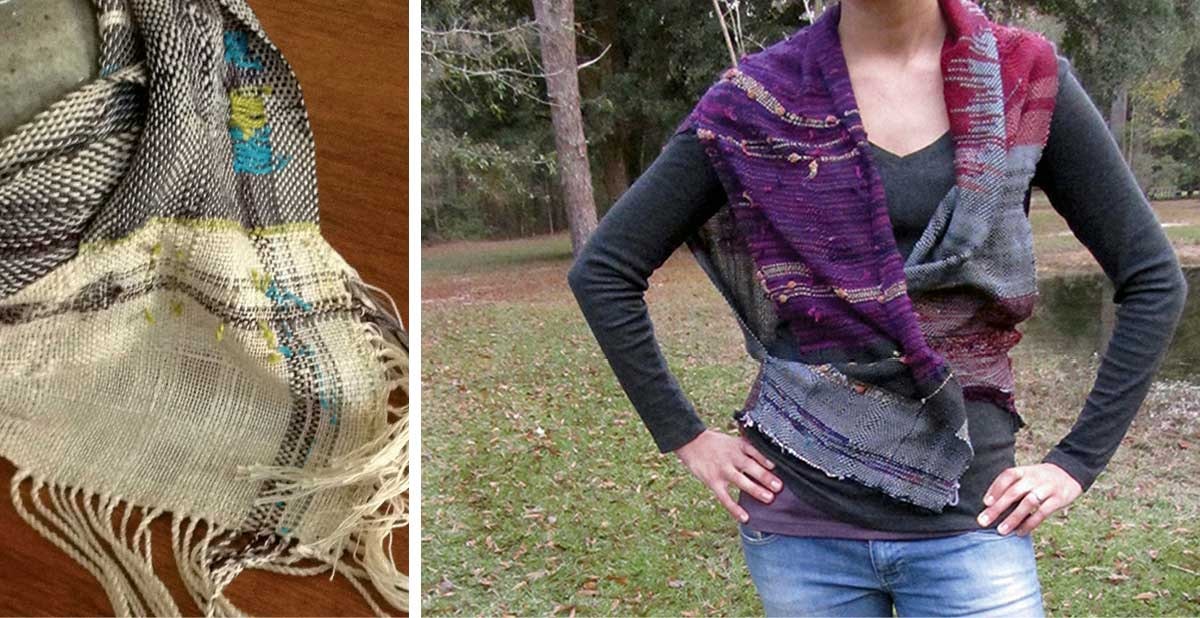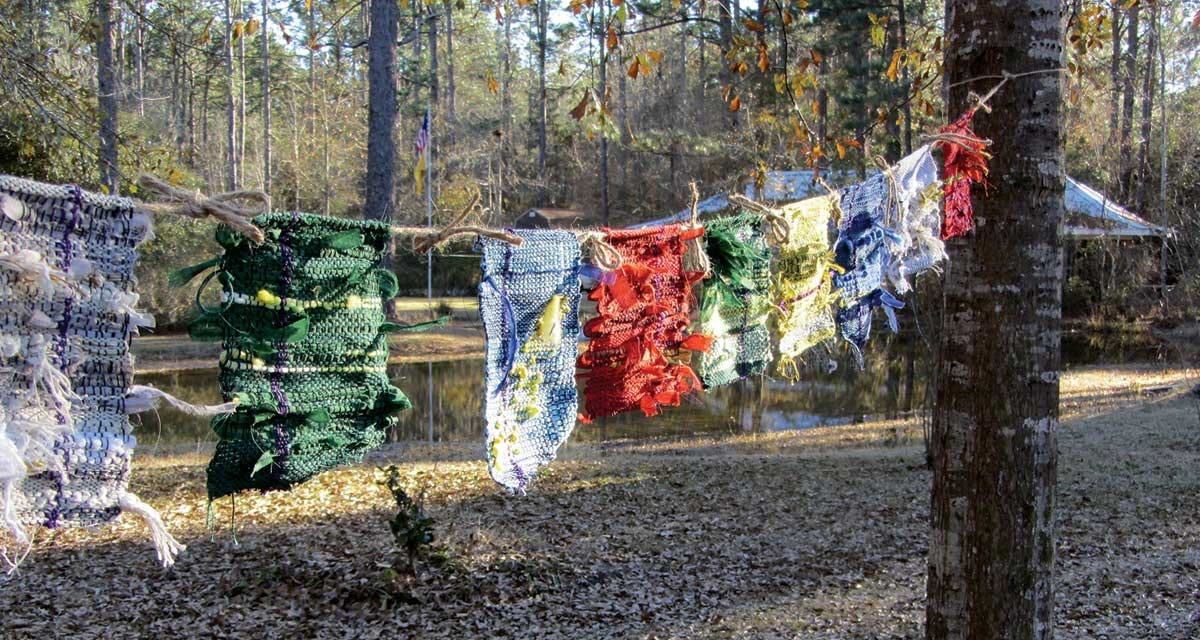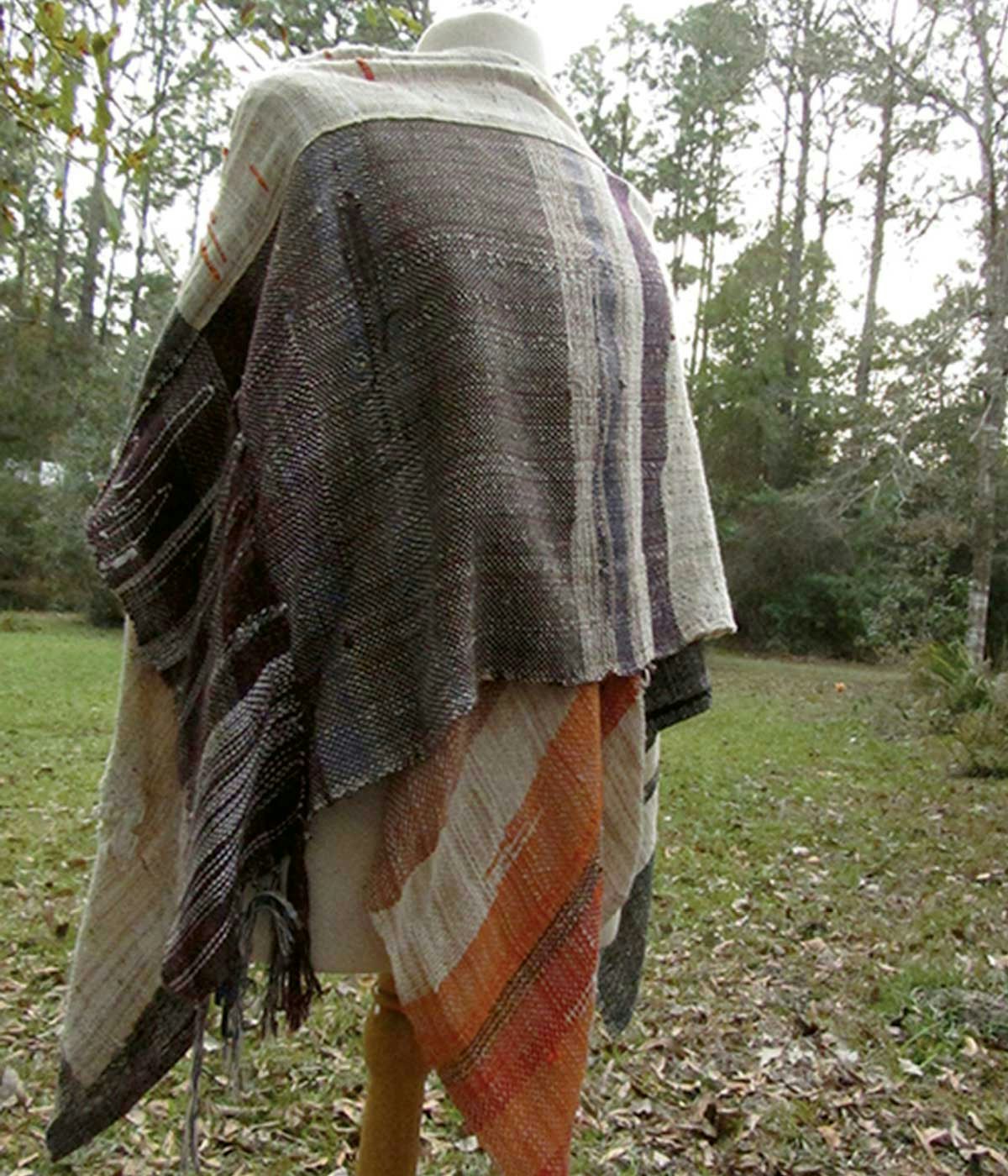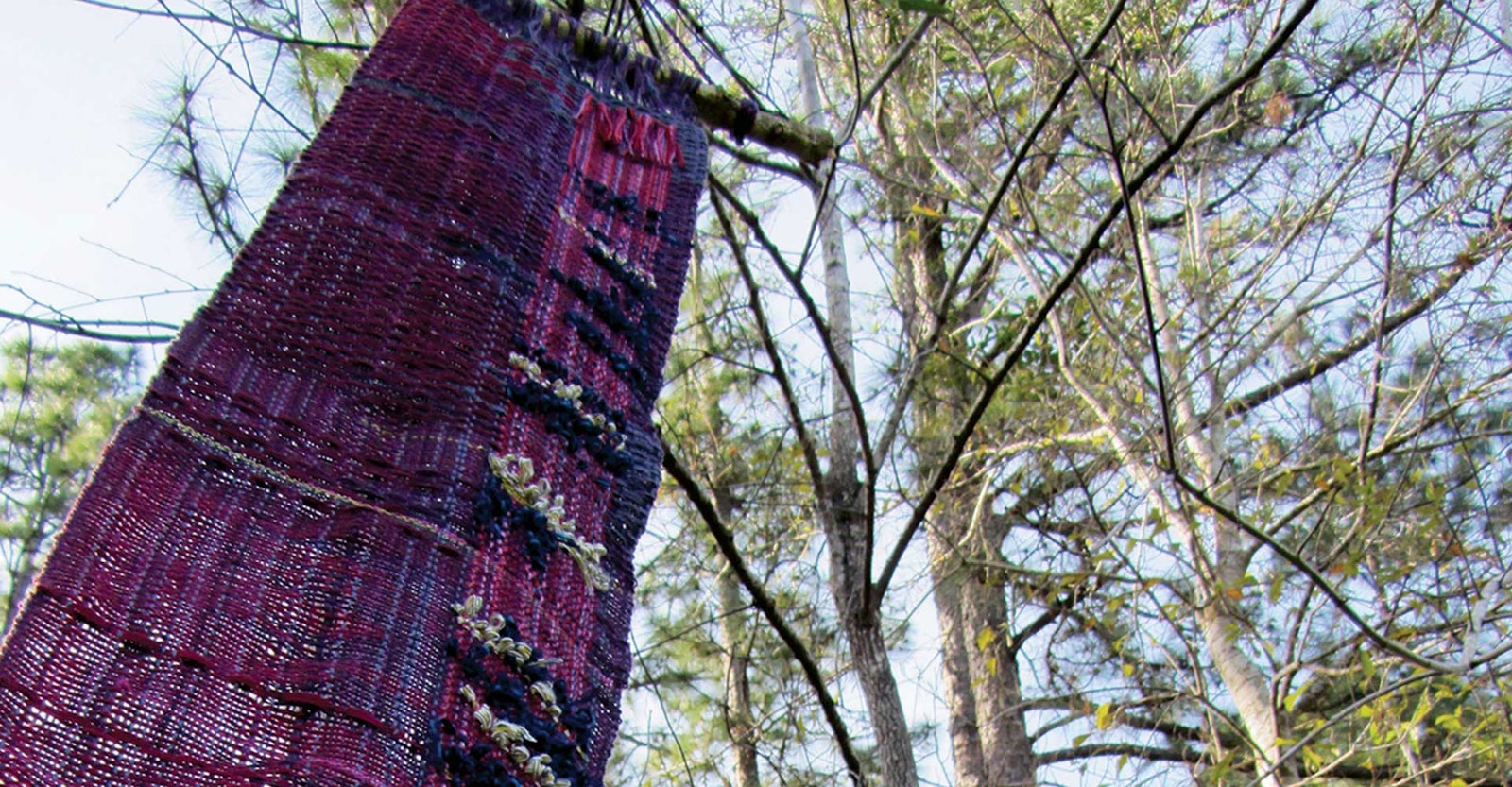The mention of SAORI weaving may conjure visions of colorful, playful, and highly textured fabric. Whether the finished product is functional or purely decorative, SAORI textiles stand firmly in the realm of art. Still, many in the weaving and textile arts communities have a fuzzy understanding of what it is and how it came to be.
This contemporary approach to handweaving traces its roots to 1960s Osaka, Japan, where it was created by a weaver named Misao Jo. She developed it as an inclusive craft, one that encourages all weavers to express themselves freely regardless of ability.
I’ve gained a great deal of pleasure and self-discovery from my introduction and subsequent journey as a weaver practicing SAORI. Like everyone else, I am faced daily with different stressors. Weaving in the SAORI way is an opportunity for me to shed those worries and pressures. When I sit down to weave, I sometimes have a stated purpose, but other times I weave simply for the pure joy and release of unrestrained weaving. The end result might be a finished article such as a scarf, shawl, or art banner, but more often I like to weave with the simple intention of creating cloth that can later be used for sewing. This provides a small degree of structure to my weaving but leaves the target quite open ended. The fabric, once removed from the loom and studied a bit, usually has an obvious future in a new form. By weaving this way, I often end up with unintended but uniquely beautiful results.
I even apply the SAORI philosophy to the time I spend weaving. I have set times when weaving is a part of my regular schedule, but there are also many spontaneous moments at the loom. Sometimes I experience flashes when the urge to communicate through weaving comes to me quite impulsively. When these desires surface, there is no option but to stop whatever I am doing and go to the loom.

Jenny often creates wearables from her SAORI cloth including scarves, vests, and ruanas.
Through each one of these ventures, regardless of initial inspiration, motivation, or meaning, I learn about myself, both as a human and as a weaver. These projects do not leave me after they are woven but stay and resurface, often unexpectedly, in future weaving.
I exist as both a weaver and a teacher within the weaving community, although I now find myself much more on the teaching side of the spectrum. In SAORI, weaving instruction is informal, and I hesitate to even describe myself as a teacher. More accurately, I provide an enabling spirit. I couple this guidance with the technical know-how required to get the loom to function properly. In keeping with the Zen origins of the term SAORI, I keep in mind that this is a type of holistic weaving, and I instill that idea in my students. With each new experience at the loom, there is something to be gained individually. It fosters confidence and self-awareness. I am privileged to have weavers who seek this type of mentorship. I gain as much, if not more, from these experiences as the students do.

A collection of prayer flags woven for the memorial service of a New Orleans architect. Later, the individual flags were distributed to surviving family members, close friends, and colleagues.
The philosophy of SAORI weaving is also about building a community of confidence and self-awareness. Because the core tenets of SAORI are so important, not just any studio or teacher can claim to represent SAORI. Instead, studios and teachers must officially register with the SAORINOMORI organization in Japan. This ensures that the studios and teachers who make the effort to become official are committed to teaching and spreading the SAORI philosophy. The passion of SAORI weavers can be infectious, and the camaraderie that can develop within the community is astounding.
The studio that I most commonly collaborate with, Weavin’ Place ~ SAORI Style, is located in South Louisiana and recently suffered from two heavy flood incidents in 2016. After not one but two rebuilds, the studio is back up and running with classes and special events. The success of the studio and the reconstructions can be traced to the community of weavers who visit and support it regularly, as well as the philosophy of the owner, Cheryl Dunworth. SAORI brought us all together as weavers and has helped us to thrive as humans.

SAORI weaving is meant to be on display, primarily as wearable art, but also in the form of banners and other textiles for living. It seeks to be shared as a physical item as well as an approach to creating. We are all creative beings, and SAORI enables this inner creativity to surface. This is true even when an individual does not feel capable or when the moment seems unsuitable. It pushes us to ignore the constraints that daily life puts upon us and simply live in a moment of discovery and self-fulfilling joy. These moments may come in short spurts or long episodes, but each one has presence and worth.
Photos courtesy of Jenny Pelc Chandela.

